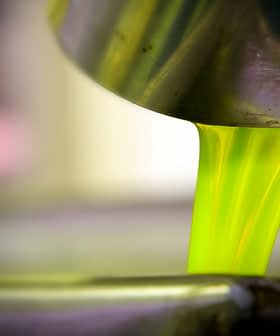The impact of ultra-processed food consumption on human health may be more significant than the food’s nutritional qualities.
According to new research in Italy, food ratings currently used for packaged food labels may miss the point by mainly focusing on the nutritional profile of processed foods.
People should stop focusing only on the nutritional profile of food. They need to start exploring the degree of processing in the food they buy.
The research paper published by the Journal of the British Medical Association (BMJ) found that significant ultra-processed food consumption leads to higher mortality risks by several causes. However, the nutritional profile of such food does not impact these risks.
The same edition of the BMJ also featured American research demonstrating a link between high consumption of ultra-processed food and colorectal cancer, with significant differences in the impact between men and women.
See Also:Health NewsInvestigating the results of their 15-year study on more than 20,000 individuals, the Italian researchers tested the effects of consuming ultra-processed food, classified as such by NOVA ratings, while also considering their nutritional classification from the Food Standards Agency Nutrient Profiling System (FSAm-NPS).
NOVA was developed by researchers at the University of São Paulo in Brazil. According to a 2019 United Nations Food and Agricultural Organization paper, NOVA definitions of ultra-processed foods are the most applied in scientific literature.
FSAm-NPS, on the other hand, is currently used to rate foods by relevant front-of-pack-labeling systems, such as the French-born Nutri-Score.
“We felt the need to see if Nutri-Score could really help improve public health, as the European Commission is currently considering its introduction as an E.U.-wide mandatory food rating system,” Marialaura Bonaccio, senior epidemiologist at the Italian Mediterranean Neurologic Institute and co-author of the study, told Olive Oil Times.
“In the last 10 years, research has gone beyond focusing on the sole nutritional composition of foods,” she added. “Thanks to the work of Carlos Monteiro and others, the research has begun focusing on how food is transformed and manipulated.”
According to the researchers, both FSAm-NPS and NOVA reach their food rating goals when individually applied to foods. Results change, though, when the two indexes are jointly considered.
“Both systems correctly predict health risks,” Bonaccio said. “If you constantly choose foods rated as inadequate by Nutri-Score, you expose yourself to greater risks of incurring relevant diseases. The same goes for NOVA, which is also associated with coronary heart disease risk.”
“When they are jointly considered, though, the risks associated with Nutri-Score are reduced by the NOVA system, and that tells us we are not seeing the impact of a nutrient-poor diet but the impact of ultra-processed foods,” she added. “More than 80 percent of foods Nutri-Score rates as poor quality foods are ultra-processed.”
In the study, the authors wrote that “a significant proportion of the higher mortality risk associated with an elevated intake of nutrient-poor foods was explained by a high degree of food processing. In contrast, the relation between a high ultra-processed food intake and mortality was not explained by the poor quality of these foods.”
The NOVA system typically defines ultra-processed food as food having five or more ingredients not usually found in a household. Those substances, such as additives and enhancers, are part of ultra-processing methods as they derive from the further processing of food components.
“The ultra-process definition is crucial because it is not univocal. It is mostly common sense,” Bonaccio said. “If I bake a pie at home, I might use many simple ingredients such as flour, eggs or milk. And the outcome might depend on the correct balance among those ingredients.”
“But when, on top of that, I use food additives, then the pie starts to become an ultra-processed food,” she added. “That is why the definition is not totally unambiguous. For example, if in a supermarket you see a fruit-based yogurt whose package displays five lines of ingredients, it might be enough to spot an ultra-processed food.”
The food industry commonly uses additives to give specific colors to food and sweeten or preserve it. Other additives cover many functions, such as enhancing flavors, suppressing fungi, inhibiting particular characteristics of the food or sanitizing the food itself.
“The processing of foods might play a role in health beyond their nutritional composition, through a variety of mechanisms triggered by non-nutritional components, such as cosmetic additives, food contact materials, neoformed compounds, and degradation of the food matrix,” wrote the researchers.
“The health risks that we have found in our study are related to significant consumption of ultra-processed food,” Bonaccio added. “Therefore, the suggestion here is not to abolish that kind of food but to limit its intake. People should stop focusing only on the nutritional profile of food. They need to start exploring the degree of processing in the food they buy.”
See Also:Updated Nutri-Score Label Indicates Whether Food Is Processed, OrganicShe recommends that a suitable method to limit ultra-processed food is to spend more time in the kitchen and follow the advice of food journalist and author Michael Pollan not to eat any food your grandmother would not recognize as food.
“Your grandmother would not know what substances like maltodextrin are. That means that cooking must stay close to the origin of food and away from food manipulation as much as possible,” Bonaccio said, citing a widely-used ultra-processed carbohydrate.
In a joint editorial about the two studies published by the BMJ, Carlos A. Monteiro, a professor of public health nutrition at the University of São Paulo and Geoffrey Cannon, a senior research fellow, warned that “to reformulate ultra-processed foods by methods such as replacing sugar with artificial sweeteners or fat with modified starches and adding extrinsic fiber, vitamins, and minerals, is not a solution.”
“Reformulated ultra-processed foods would be especially troublesome if promoted as ‘premier’ or ‘healthy’ products,” they added. “They would remain partly, mainly, or solely formulations of chemicals.”
Following their study, the Italian researchers warned against adopting any food labeling system mainly based on the nutritional aspects of food.
“Within Nutri-Score, for instance, you could find highly refined and processed foods which achieve a good and apparently healthy score,” Bonaccio said. “That happens because they might be low in salt, sugar or fats. But that does not mean they are to be considered a healthy food.”
An example of this is artificially-sweetened sugar-free sodas, which achieve healthy scores, “even when they are not food at all, but just a chemical formulation,” Bonaccio added.
She noted that ultra-processed food intake is growing globally. “In the United States and the United Kingdom, the most recent data show that 60 percent of the daily calories, on average, come from this kind of food. We are still at 20 percent in Italy, but that is the tendency here as well.”
While the latest American and Italian studies join the growing literature on the health effects of ultra-processed food consumption, it remains unclear what the reasons are for such negative health consequences.
“We must investigate the inner mechanism,” Bonaccio said. “Being now able to set aside the nutritional aspects of poor quality food, we still have to understand what triggers such harmful reactions.”
Researchers in many countries are working on several hypotheses, investigating the impact of alterations to the food matrix or the destruction of phytochemicals and other substances.
Other research is focused on the impact of food separation and re-aggregation on the microbiome and insulin response or the exposure to plastic due to the packaging of most products.
“Each of those conditions might be a trigger for physiopathological processes,” Bonaccio said. “We are currently working on the inflammatory pathway, as these aspects might exert a role in rising inflammation levels.”
“The Mediterranean diet lights the path,” she concluded. “The MedDiet is not only fruits, vegetables, a light intake of wine and olive oil; it is mostly an un-processed food diet. We should always remember that it comes from farmers’ tradition made with raw foods or slightly processed foods and the use of minimal techniques.”









